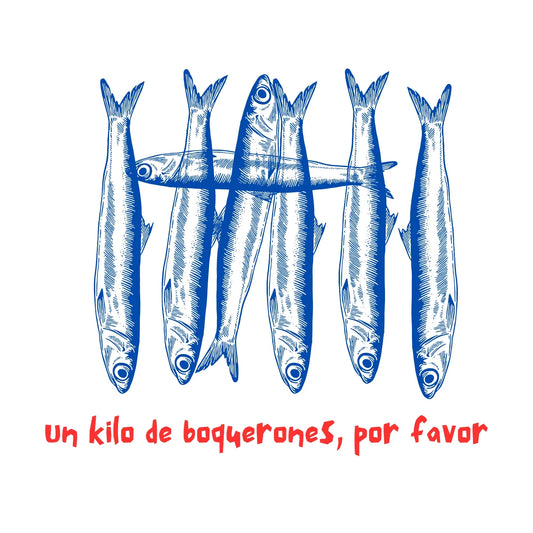The Caribbean's lionfish plague is starting to become a serious problem for other reef species. This fish inhabits the coasts of the Pacific and Indian Oceans but was introduced to the U.S. coasts apparently due to an accident at a Miami aquarium that released several specimens into the Atlantic. This allowed the species to spread along the coast to the Caribbean. With very few predators due to its venomous dorsal spines, it's a large, voracious predator capable of decimating small fish and mollusks in the Caribbean, seriously affecting the ecosystem and food chain. It's already becoming a serious issue on the coasts of Colombia and Honduras, directly impacting local fishermen as some of the species they traded are disappearing.
Shark Lovers T-Shirts
VIEW MORE SHARK T-SHIRTS
In 2011, on a small reef off the coast of Honduras, a group of ecologists began teaching sharks at the Roatan Marine Park how to hunt lionfish. A half-dead lionfish was tossed into a swirling mass of reef gray sharks. The sharks descended upon the weakened prey, and in a matter of seconds, the lionfish disappeared along with another released into the frenzy of the sharks. This approach led conservationists to believe there's hope in the fight against lionfish, which already occupy the coasts of the North Atlantic extending beyond the Caribbean.
A 2009 study conducted by the National Oceanic and Atmospheric Administration (NOAA) in the Bahamas showed that lionfish feed on over 41 species of fish, including commercially valuable species like grouper and snapper. They also prey on reef fish that clean algae, performing a valuable task benefiting ecosystem health.
The lionfish is highly fecund (females can release over two million eggs each year) and is fiercely territorial, capable of displacing original occupants from their territory upon discovery.
 Lionfish in Roatán, Honduras. Image by LASZLO ILYES
Lionfish in Roatán, Honduras. Image by LASZLO ILYES
It's estimated that the lionfish arrived in Roatán in May 2009, and since then, local divers and fishermen have noticed a decline in the number of young fish of various species. While the lionfish bears some responsibility, other factors such as poaching and overfishing might have contributed to the decrease in fish numbers. There aren't many initiatives underway to reduce the lionfish presence in the area. In 2006, NOAA conducted a study along the coasts from Florida to North Carolina, revealing that the lionfish is the second most common species in these waters, jeopardizing local biodiversity and alerting several North American organizations to control its growth and investigate its impact on the area.
In the Caribbean, efforts to curb their vast proliferation include lionfish hunting dives where participants have captured over 1,300 lionfish in local waters, often for human consumption.
Seeking Ecosystem Balance
Although the efforts made by divers to combat the lionfish invasion are helpful, they're not sufficient. A natural predator needs to coexist and keep the species' growth in check. "I've always maintained that sharks are going to solve this problem," comments Samuel Gruber, a veteran expert working with sharks in Florida for 40 years. In the Indo-Pacific, where lionfish originate, sharks feed on them without adverse effects on their health, despite the potent neurotoxin in the lionfish spines, harmful to other species, including humans. While the Roatán sharks haven't yet included lionfish in their diet, Gruber believes predator training won't take as long as it seems. In the 1970s, he conducted several experiments demonstrating sharks' ability to learn behaviors through conditioning techniques.
T-shirts designed by divers for divers
VIEW MORE T-SHIRTS FOR DIVERS
Following Honduras' example, Gruber now plans to train lemon sharks in Bimini, Florida, where there's also a serious lionfish issue, to hunt the invasive species. Additionally, he asserts that lemon sharks might do a better job than what's happening in Roatán. "Lemon sharks are highly adaptable; they can put their heads in crevices and suction what's between rocks. They don't bite them; they engulf them," he says.

There are limitations to controlling an out-of-control species using this method. Reef and lemon sharks aren't pelagic; they stay within the few kilometers that form the reefs and don't venture into open seas. Even if they start feeding on lionfish, scientists agree it's impossible to eradicate them all. "Eradication is rarely a viable option for most invasive species as they multiply very rapidly," says Al Dove, an invasive species expert from the Georgia Aquarium.
Training sharks to feed on these entirely new species to them is the hope in Roatán, and so far, these efforts seem to be paying off. The latest reports from divers confirm that the number of lionfish is decreasing in areas where trained sharks live, although it's yet to be seen if the infestation will decrease in areas without training. In April 2011, Grazzia Matamoros, the director of the Roatán park, confirmed that moray eels are also starting to consume lionfish. Eventually, nature tends to take care of its problems, even if caused by us.
Source: www.time.com
More information and images: Antoni Busiello
```
























